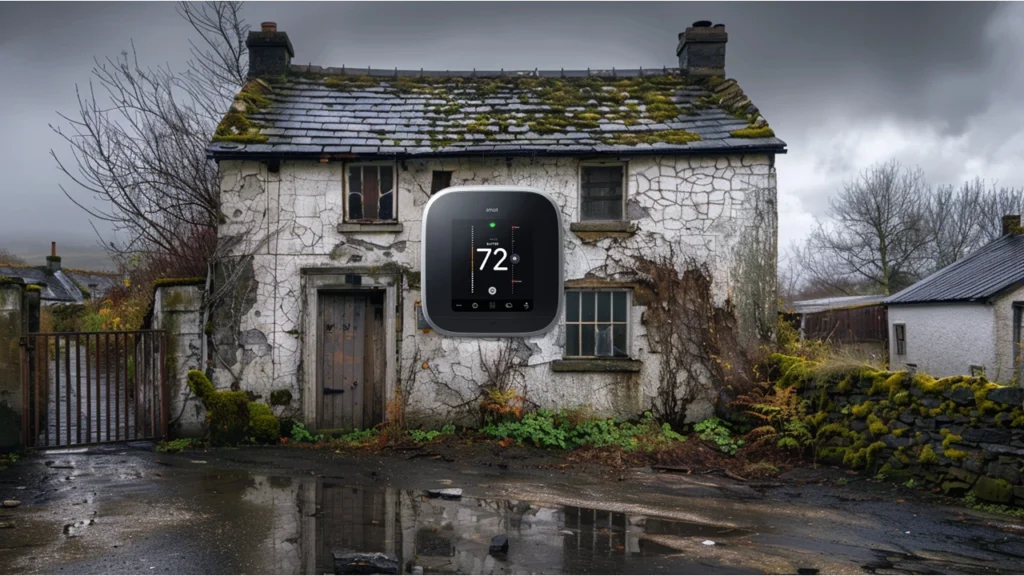Listen to audio:
Introduction:
Installing a smart thermostat can transform your home’s energy efficiency and comfort, but homeowners with pre-1990 houses often face unique challenges.
While modern homes are designed with smart technology in mind, older homes require careful consideration of wiring, HVAC compatibility, and system limitations.
Understanding these factors can help you successfully upgrade your vintage home without compromising its character or functionality.
What Smart Thermostats Are Available

Understanding Your Older Home’s HVAC System
Homes built before 1990 typically feature simpler HVAC systems compared to today’s multi-zone, variable-speed units.
Most older homes utilize basic heating systems, such as boilers, radiators, or single-stage furnaces, often paired with window air conditioning units or early central air systems.
These systems were designed for manual operation with basic mechanical thermostats.
The key difference lies in the wiring and control systems.
Older thermostats usually operate on 24-volt systems with minimal wire connections—sometimes as few as two wires for heating-only systems.
This contrasts sharply with modern HVAC systems, which may require five or more wires to support features such as separate heating and cooling, fan control, and common wire power.
Common Wiring Challenges and Solutions
The most frequent obstacle when installing smart thermostats in older homes is inadequate wiring.
Many pre-1990 homes lack a “C-wire” (common wire) that provides continuous power to smart thermostats.
Without this wire, your smart thermostat may experience power issues, frequent disconnections from WiFi, or complete failure to operate.
Several solutions exist for this common problem. Power extender kits can draw power from your HVAC system’s control board, effectively creating a virtual C-wire connection.
Alternatively, you can run a new thermostat wire from your HVAC unit to the thermostat location; however, this may require professional installation, depending on your home’s layout.
Battery-powered smart thermostats offer another solution, though they require regular battery changes and may have limited features compared to hardwired models.
Some manufacturers also offer adapter kits specifically designed for older systems, which can bridge the gap between vintage wiring and modern smart technology.
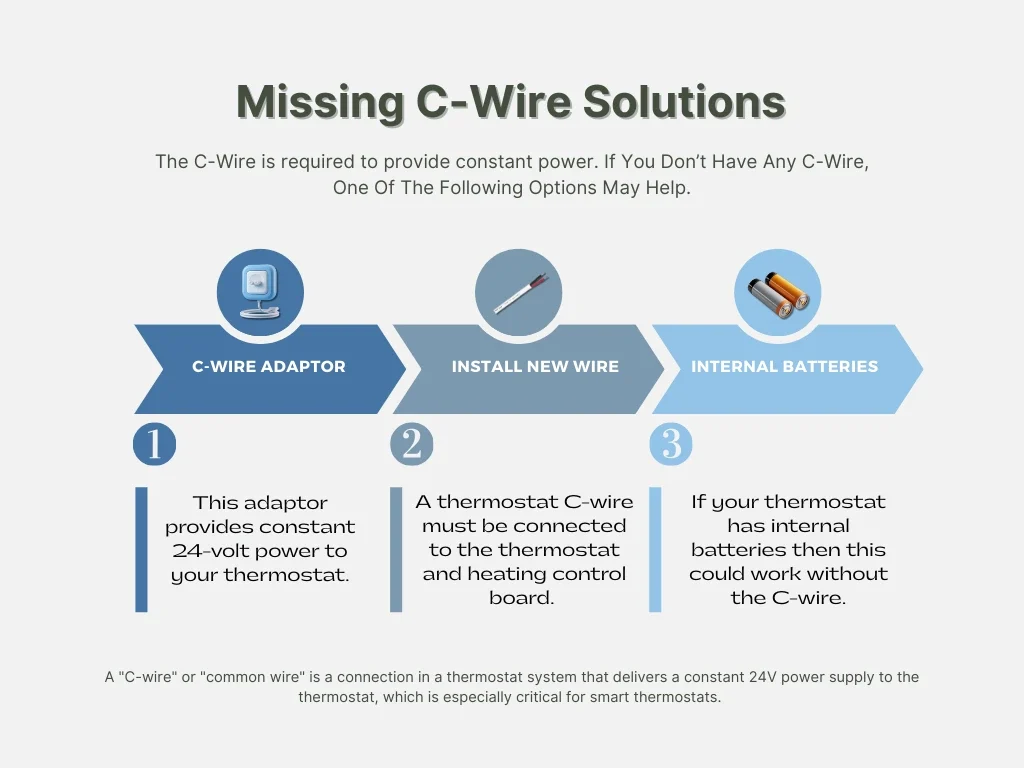
Compatibility Considerations for Vintage HVAC Equipment
Not all smart thermostats work with older HVAC systems. Heat pump systems from the 1980s, for instance, may utilize different staging controls than those expected by modern smart thermostats.
Similarly, older boiler systems with zone valves or circulator pumps may require specific thermostat compatibility.

Before purchasing a smart thermostat, identify your exact HVAC system type and check the manufacturer’s compatibility list.
Look for smart thermostats specifically designed to work with older
systems, as these often include features such as adaptive staging and support for legacy systems.
Millivolt systems, common in older gas fireplaces and some heating systems, present particular challenges since they generate their own low-voltage power.
These systems typically require specialized smart thermostats designed for millivolt operation, as standard 24-volt smart thermostats won’t function
properly.
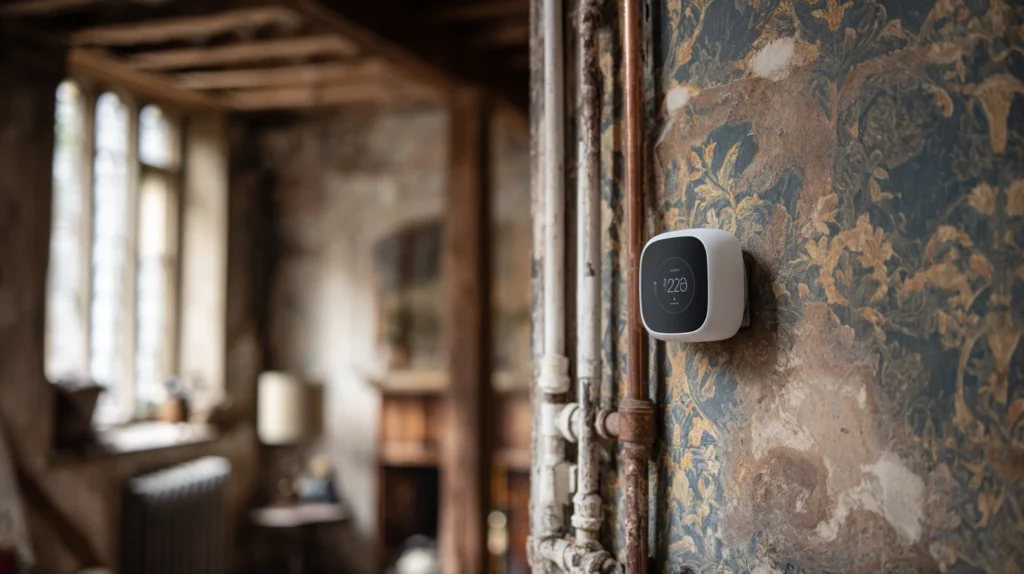
Professional vs. DIY Installation
While many smart thermostat installations are straightforward DIY projects, older homes often benefit from professional installation.
An HVAC technician can assess your system’s compatibility, identify
potential wiring issues, and ensure proper integration without damaging vintage equipment.
Professional installation becomes especially important if your home requires rewiring, system modifications, or if you’re unsure about your HVAC system’s specifications.
Many smart home automation projects in older homes benefit from expert guidance to avoid costly mistakes.
However, if your older home already has adequate wiring and a compatible system, DIY installation can be a rewarding project.
Always turn off the power at the breaker before beginning work, take photos of existing wire connections, and consult your smart thermostat’s compatibility checker before starting.
Maximizing Energy Savings in Older Homes
Smart thermostats can deliver significant energy savings in older homes, often more dramatically than in newer, already-efficient houses.
The programmable scheduling and learning features help optimize older,
less-efficient HVAC systems that may have been running on simple manual controls for decades.
Geofencing features automatically adjust temperatures when you’re away, preventing your older furnace or boiler from heating an empty house.
Smart scheduling can also help manage the longer warm-up and
cool-down times typical of older HVAC systems, ensuring comfort while minimizing energy waste.
The data insights provided by smart thermostats can reveal inefficiencies in older homes that weren’t previously apparent.
You might discover that your 1980s heat pump struggles in extreme cold, or that certain rooms heat unevenly due to aging ductwork. This information can guide future sustainable home improvements that complement your smart thermostat upgrade.

Integration with Modern Smart Home Systems
Once installed, your smart thermostat can serve as a gateway to broader home automation in your vintage home.
Many smart thermostats integrate seamlessly with popular smart home platforms, enabling you to create automated routines and scenes that accommodate the unique characteristics of your older home.
For homeowners just beginning their smart home journey, a thermostat upgrade often provides the perfect introduction to home automation.
You can explore easy, low-cost ways to add automation that
Complement your new smart thermostat without overwhelming your home’s vintage electrical system.
Consider how your smart thermostat will communicate with other devices. Older homes may have WiFi dead zones or interference issues due to thick walls, metal components, or outdated electrical systems.
A mesh WiFi system or WiFi extenders can ensure reliable connectivity for your smart thermostat and future smart home additions.
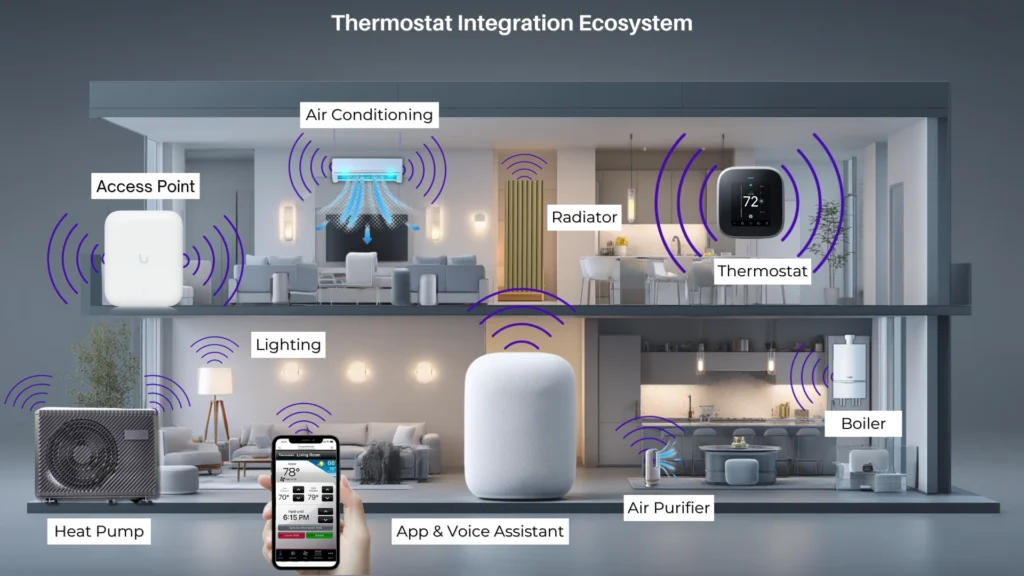
Security and Privacy Considerations
As you bring internet connectivity into your older home through smart thermostats, security becomes paramount.
Older homes weren’t designed with cybersecurity in mind, and adding connected devices creates new potential vulnerabilities.
Choose smart thermostats from reputable manufacturers with strong security track records and regular firmware updates.
Enable two-factor authentication where available, and regularly update your device passwords.
Understanding smart home device vulnerabilities and safety guidelines helps protect your newly connected older home from potential security threats.
Consider creating a separate network for your smart home devices, isolating them from computers and phones that contain sensitive personal information.
This practice, known as network segmentation, can limit potential damage if one device becomes compromised.
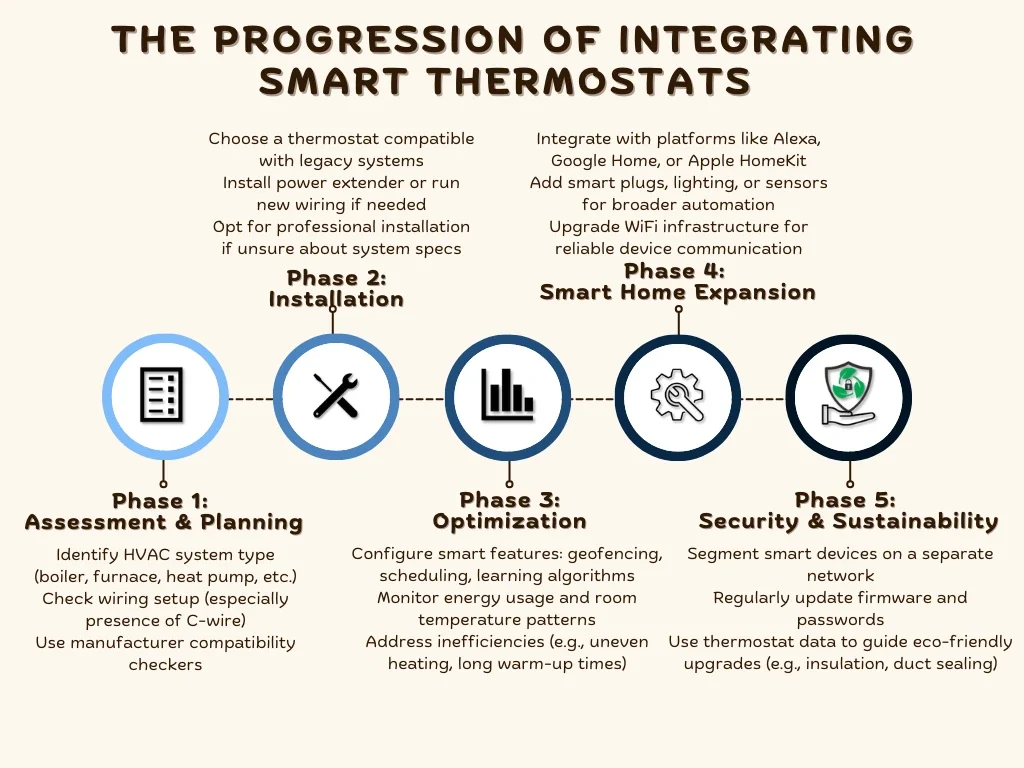
Conclusion
Integrating smart thermostats into older homes requires more planning than modern installations, but the benefits often exceed the extra effort.
With proper compatibility research, appropriate wiring solutions, and careful installation, homeowners can successfully bring 21st-century comfort and efficiency to their pre-1990 homes.
The key lies in understanding your home’s unique characteristics and choosing solutions that work with, rather than against, your existing systems.
Whether you tackle the installation yourself or hire a professional, a smart thermostat can serve as the foundation for a more comfortable, efficient, and intelligent older home.
Start with your thermostat upgrade, then gradually expand your smart home ecosystem as you become more comfortable with the technology.
Your vintage home’s charm and character can coexist beautifully with modern smart home convenience, creating the best of both worlds for years to come.
FAQ
Yes, but older homes often have simpler HVAC systems and limited wiring, which may require additional steps for compatibility.
Most older homes lack a “C-wire” (common wire), which smart thermostats need for continuous power. Without it, devices may disconnect or fail.
Use a power extender kit
Install new thermostat wiring (may require a pro)
Choose battery-powered or adapter-equipped smart thermostats
No. Systems like millivolt heaters, zone-valve boilers, or 1980s heat pumps may need specialized thermostats. Always check manufacturer compatibility.
If your system is complex or needs rewiring, professional installation is recommended. For simpler setups with existing wiring, DIY is possible with proper precautions.
Definitely. Features like geofencing, smart scheduling, and learning algorithms help optimize inefficient systems and reduce energy waste.
Yes. They often serve as a gateway to broader automation. Just ensure your home’s WiFi is strong enough—mesh systems or extenders may help.
Choose reputable brands with regular updates
Use strong passwords and two-factor authentication
Segment your network to isolate smart devices from personal data

